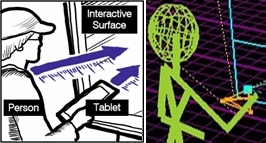Cited By
View all- Aghel Manesh SZhang TOnishi YHara KBateman SLi JTang A(2024)How People Prompt Generative AI to Create Interactive VR ScenesProceedings of the 2024 ACM Designing Interactive Systems Conference10.1145/3643834.3661547(2319-2340)Online publication date: 1-Jul-2024
- Lunding MGrønbæk JGrymer NWells THouben SPetersen M(2023)Reality and Beyond: Proxemics as a Lens for Designing Handheld Collaborative Augmented RealityProceedings of the ACM on Human-Computer Interaction10.1145/36264637:ISS(21-40)Online publication date: 1-Nov-2023
- Bateman SGutwin CMansoor HNacenta Mvan der Kamp MBaliesnyi MGagnon KRollheiser J(2023)WAMS: A Flexible API for Visual Workspaces Across Multiple SurfacesProceedings of the ACM on Human-Computer Interaction10.1145/35932367:EICS(1-40)Online publication date: 19-Jun-2023
- Show More Cited By





